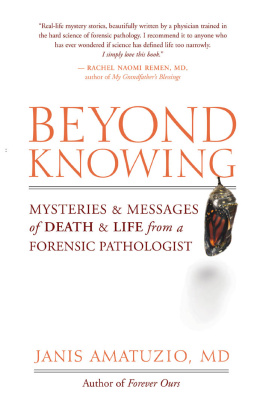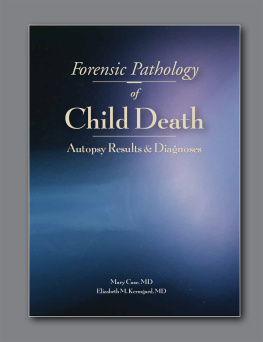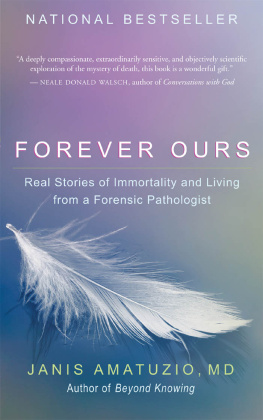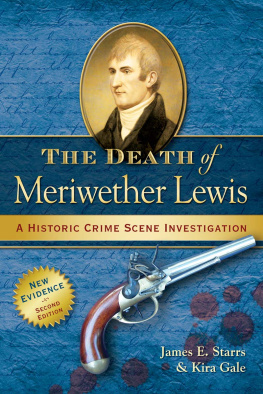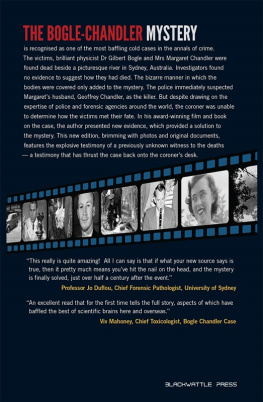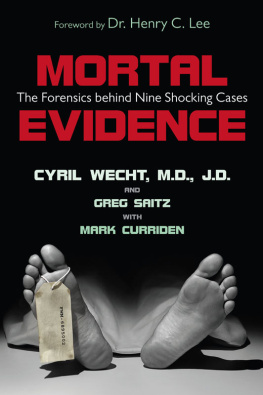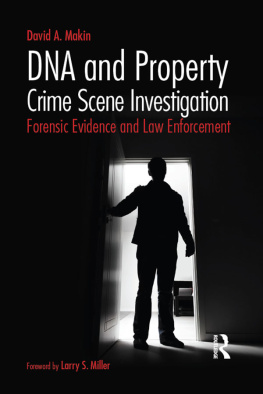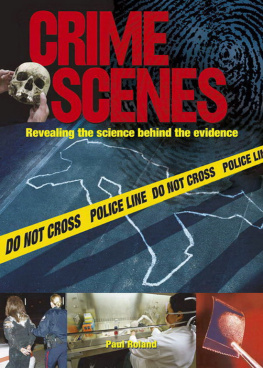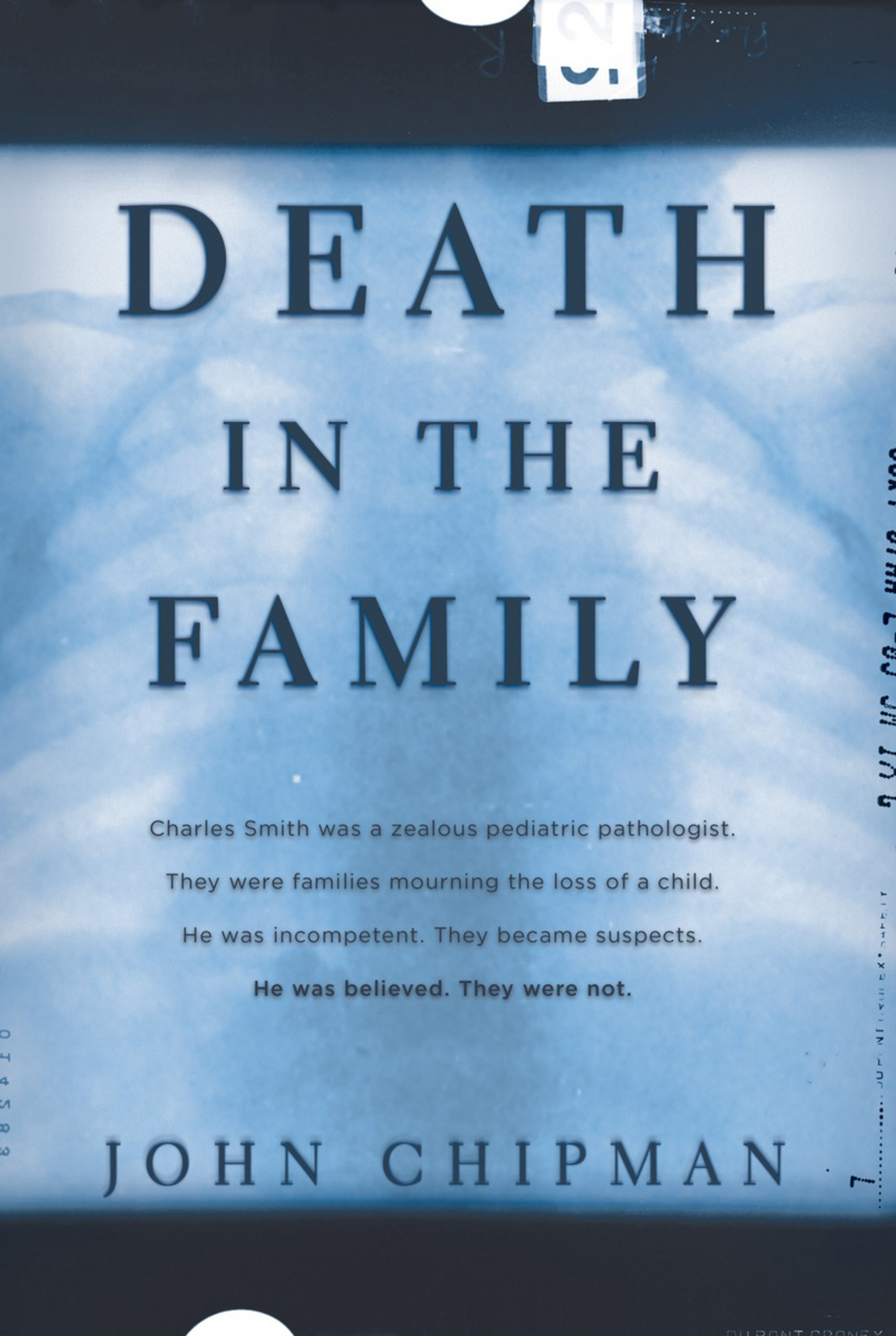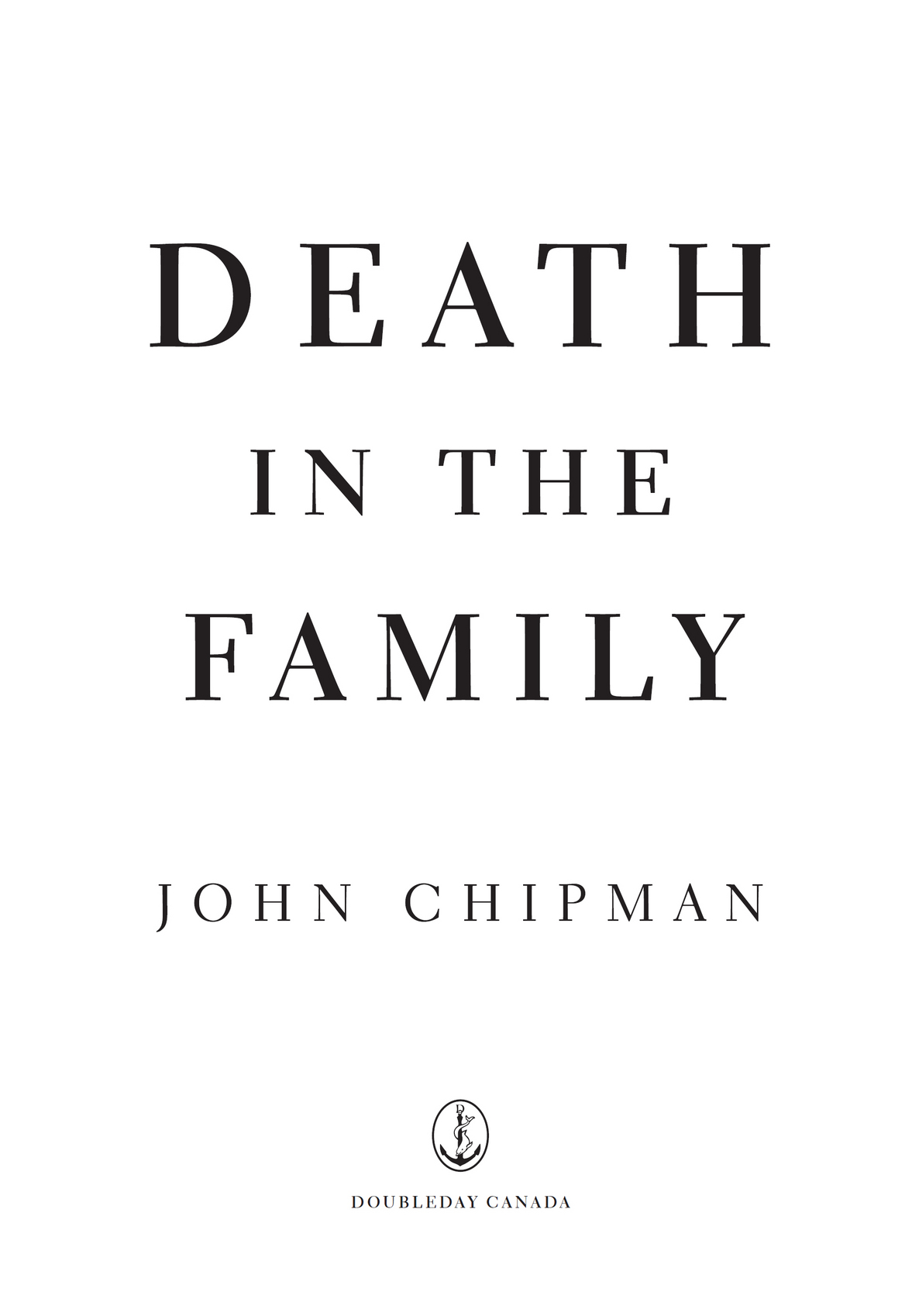All rights reserved. The use of any part of this publication, reproduced, transmitted in any form or by any means electronic, mechanical, photocopying, recording or otherwise, or stored in a retrieval system without the prior written consent of the publisheror in the case of photocopying or other reprographic copying, license from the Canadian Copyright Licensing Agencyis an infringement of the copyright law.
Doubleday Canada and colophon are registered trademarks of Penguin Random House Canada Limited
Death in the family / John Chipman.
Issued in print and electronic formats.
1. Smith, Charles (Charles Randal). 2. CoronersOntario.
3. Forensic pathologyOntario. 4. DeathCauses. 5. Judicial errorOntario. 6. Justice, Administration ofOntario. I. Title.
Cover images: (x-ray film) Nick Veasey/Getty Images; (x-ray) Image from pp 55 of Birth fractures and epiphyseal dislocations (1917) by Edward Delavan Truesdell/Internet Archive
Published in Canada by Doubleday Canada, a division of Penguin Random House Canada Limited
DR . JAMES YOUNG , FORMER CHIEF CORONER OF ONTARIO
PREFACE
IT WAS OCTOBER 2007, and I was driving home from work. CBCs World at Six was on the radio, and one of the top stories was about William Mullins-Johnson, who had spent more than eleven years in prison after being given a life sentence for molesting and murdering his four-year-old niece, Valin. Bill was one of the many victims of disgraced pediatric pathologist Charles Smith, and that cool autumn day hed been back in court, where a panel of appeal judges had quashed his conviction and acquitted him of a crime that never occurred.
The story of Dr. Charles Smiths incompetence and negligence had been building for almost eight years by then, and while I knew the broad strokes, I had yet to connect with it in a meaningful way. Once the top pediatric forensic pathologist in Ontario and arguably the country, Dr. Smith had used his arrogance and guile in court to mask his incompetence on the job, and at least twenty people were wrongly accused or convicted because of his mistakes. It was a huge story, but the scope of the misery Smith had helped create didnt hit me until I heard that news report about Bill Mullins-Johnson.
Bill Mullins (the name he goes by now) had been living at his brother Pauls home in Sault Ste. Marie, Ontario, at the time of Valins death. He and his brother were close. Bill was babysitting the three children of Paul and his partner, Kim Lariviere, the night Valin died.
The autopsy was done by a local pathologist, Bhubendra Rasaiah, who determined that Valin had been strangled to death. She had extensive bruising, including marks around her neck. Her anus was enlarged. A local pediatrician, Patricia Zehr, said the child had been sexually abusedthe worst abuse she had ever seen. Dr. Smith consulted on the case from Toronto, co-authoring a supplementary report stating the child was being sodomized at the time of her death.
Initially, Paul didnt believe his brother was capable of something so horrific. He was a caring uncle, and the three childrensix-year-old Jean, four-year-old Valin and two-year-old Johnadored him. But as the police, Crown and medical experts laid out all their evidence at Bills trial, Pauls faith started to waver. And when the jury said that wordguiltyPauls younger brother was dead to him.
But Bill knew that he was not responsible for Valins death. And he could think of only one other adult male who had been near Valin that night: his brother. Initially, Bill couldnt believe it either; he was sure there must have been some mistake. But as the Crown built its case at trial, as medical expert after medical expert took the stand, his faith also started to waver. And by the time he was convicted, Bill was convinced hed be doing time for a crime his brother had committed.
A deep, visceral hatred took hold of the two brothers, and it consumed them. Paul sank into drug and alcohol abuse. His relationship with Kim collapsed. She left him, taking their two surviving children with her. Bill continued to maintain his innocence, and the penal system held it against him. His appeal was denied. He considered suicide.
And then, more than ten years into his sentence, Bill received a visit from David Bayliss, a lawyer with the Association in Defence of the Wrongly Convicted (now Innocence Canada). Bayliss told him he was reinvestigating the casehe believed Bill was the victim of a miscarriage of justice. And he thought he might be able to prove it.
Convinced he already knew the answer, Bill asked Bayliss who he thought had killed Valin. Baylisss response could not have been more shocking. He did not think anyone had murdered Bills niece. He believed she had died of natural causes.
The bruising Dr. Rasaiah had seen during the autopsy was the result of blood pooling after the childs death. The signs of strangulation were caused during the autopsy itself. And indications of sexual abuse were part of the bodys natural post-mortem process. The childs anus wasnt enlarged because shed been sodomized; it enlarged as the muscles around it relaxed after death.
New medical experts found no evidence of foul play.
The Ontario Court of Appeal set aside Bills first degree murder conviction, and entered an acquittal in its place.
[The medical evidence] had my brother thinking that I killed his little girl. [And it] had me thinking that he killed his little girl because I knew I didnt kill her, Bill told the court at his appeal hearing in 2007.
The family would never know exactly why or how Valin had died.
The radio report included Bills statement at his appeal, and it hit me like a bag of bricks. His story was almost biblical: two brothers turned against each other, each convinced the other had committed an unspeakable crime, only to realize years later that the crime had never happened.
Six weeks earlier, late in the summer of 2007, the courts had overturned another miscarriage of justice. It had taken a last-minute reprieve to save fourteen-year-old Steven Truscott from the gallows in 1959, when he was scheduled to hang for the murder of his classmate Lynne Harper. Truscotts death sentence was commuted to life in prison, and he spent a decade behind bars. His case became one of Canadas most famous wrongful convictions, but almost fifty years went by before the Court of Appeal for Ontario finally overturned his conviction. That was big news, but it was the story that followed that stuck with me: the one about Lynne Harpers family, who said they were still convinced Steven Truscott was guilty.




